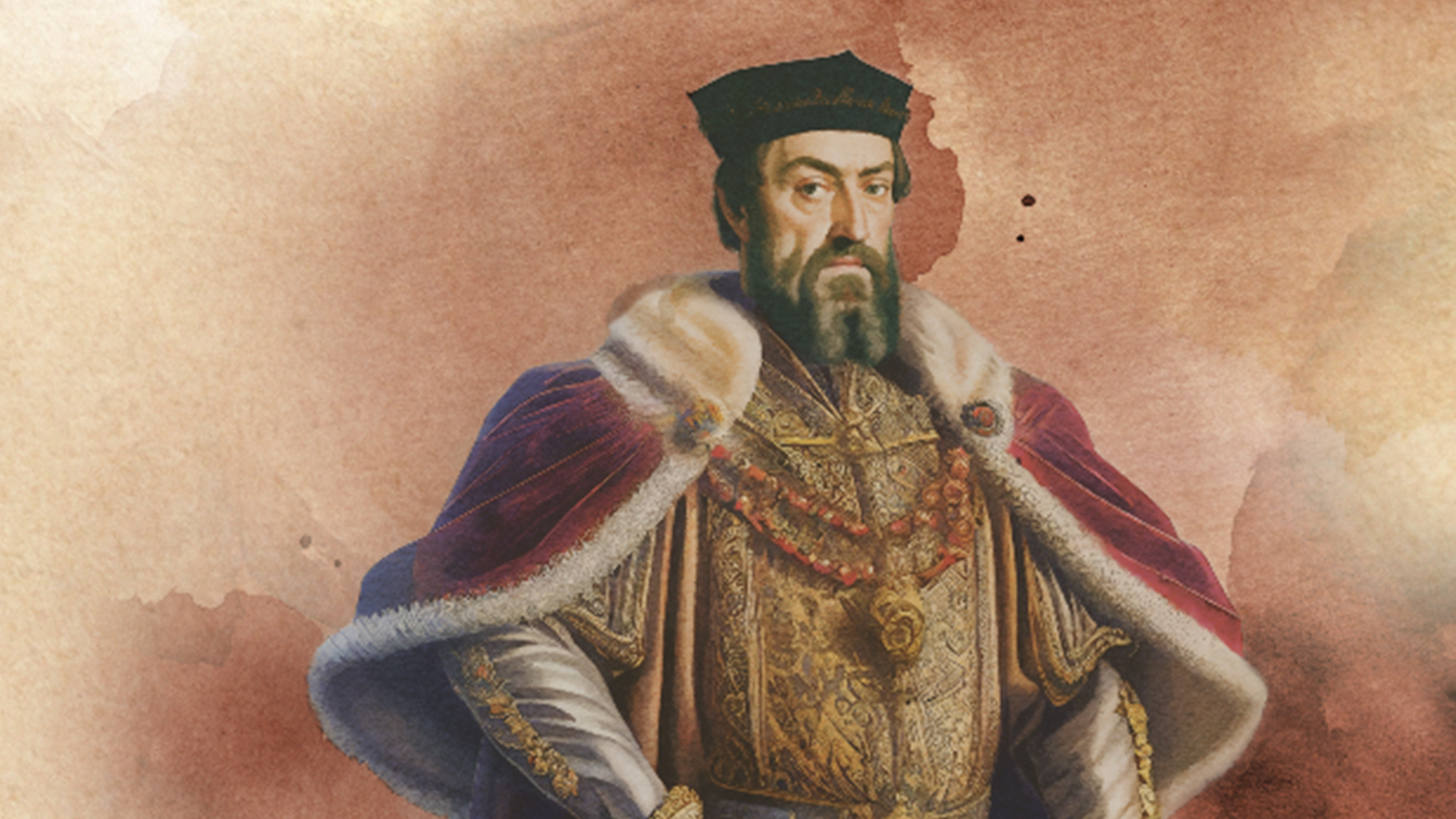King Manuel I was one of the most famous Portuguese monarchs, reigning over four continents and three oceans. Known as the Fortunate One, he ruled between 1469 and 1521, 26 years marked by a period of great navigations and discoveries.
As the fifth king of the dynasty of Avis, and unexpectedly succeeding his cousin, he was the son of Fernando, Duke of Beja, and Beatriz, the grandson of Duarte I, and brother of Leonor.
In addition to the unequivocal affirmation of the Portuguese overseas empire, his reign was marked by profound changes in Portuguese society, which embraced the Renaissance, giving it “Portuguese” particularities. This was a time of vigorous creation and innovation, based on dialogue with the prevailing European models in the sciences, literature and the arts.
It was during this golden period that great artists and humanists emerged, as well as the Manueline style, which had its main exponents in the Jerónimos Monastery, the Tower of Belém, and the Convent of Christ in Tomar.
Intending to enhance the role of the Order of Christ, he fostered the reformulation of its most emblematic venue. At that time, the temple, choir, and sacristy were built to the west of the Charola (private oratory for the Knights), which would also see its decorative content significantly altered. It was executed by the masters Diogo de Arruda and João de Castilho in a decorative discourse celebrating the Portuguese maritime discoveries, with the famous window of the Chapter House on the western façade of the Manueline church standing out.
The discovery of the sea route to India by Vasco da Gama in 1498 strengthened Portugal’s hold on overseas trade, as did the discovery of Brazil by Pedro Álvares Cabral in 1500. It was during this period that King Manuel I dazzled the papal court with an elephant during his famous embassy in early 1514.
King Manuel I died in Lisbon on the 13th December 1521 and was buried in the Jerónimos Monastery.
King Manuel I
